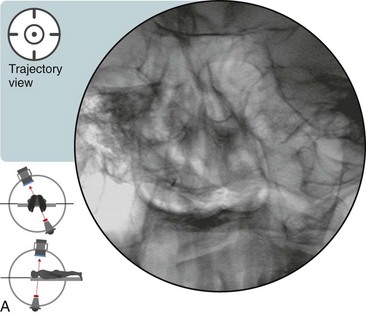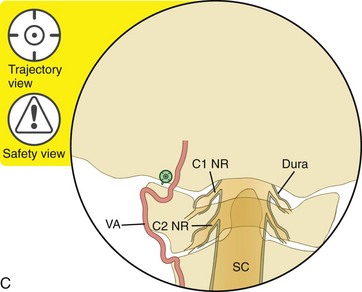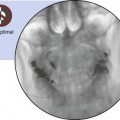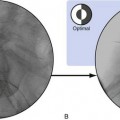Chapter 36 Atlantooccipital Joint Intraarticular Injection
Note: Please see page ii for a list of anatomical terms/abbreviations used in this book.
 Trajectory View (Figure 36–1)
Trajectory View (Figure 36–1)
![]() Trajectory View Safety Considerations
Trajectory View Safety Considerations
 Stay along the lateral third of the atlantooccipital joint superiorly. If the needle deviates, the only safe direction is superior.
Stay along the lateral third of the atlantooccipital joint superiorly. If the needle deviates, the only safe direction is superior.
 Avoid the spinal cord (SC), the dura, and the nerve roots (NR) by preventing the needle tip from straying too far medially.
Avoid the spinal cord (SC), the dura, and the nerve roots (NR) by preventing the needle tip from straying too far medially.
 Avoid the vertebral artery by preventing the needle tip from straying too far medially, laterally, or inferiorly.
Avoid the vertebral artery by preventing the needle tip from straying too far medially, laterally, or inferiorly.
Place the patient in the prone position with the neck slightly flexed and the head supported.
Confirm the level (with the anteroposterior view).
Oblique the fluoroscope 25 to 30 degrees ipsilaterally (to the left, in this case).
Stay updated, free articles. Join our Telegram channel

Full access? Get Clinical Tree










